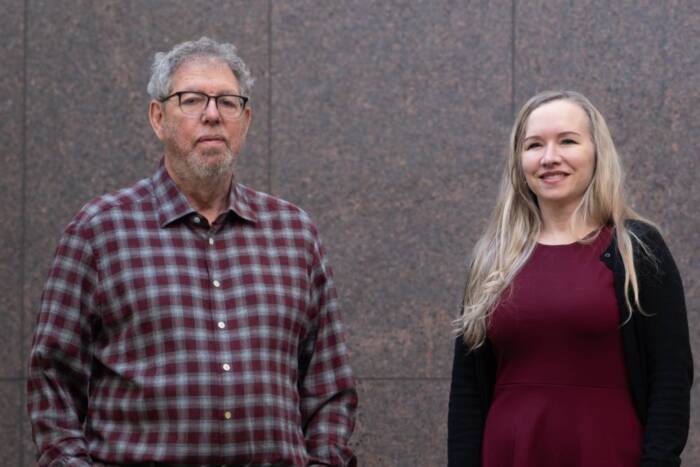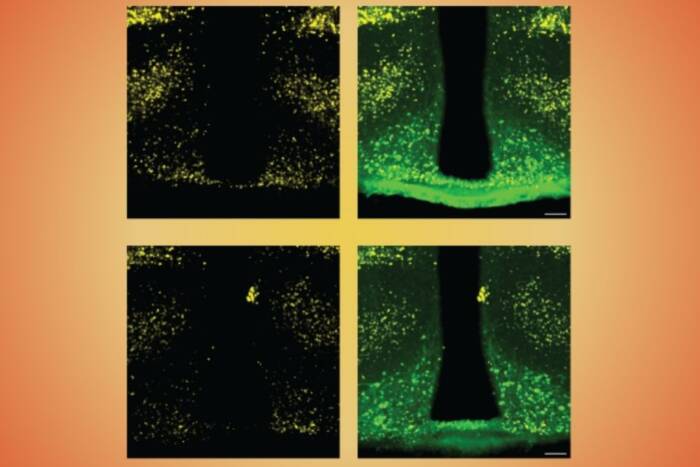Luciano Marraffini, among the first scientists to plumb the workings of the CRISPR-Cas system, is promoted to associate professor
Rockefeller University microbiologist Luciano Marraffini, head of the Laboratory of Bacteriology, has been promoted to associate professor. He studies the CRISPR-Cas system, which is part of an immune response bacteria and some other microbes use to defend themselves against viruses known as phages. The system enables the bacteria to remember the DNA sequences of invading phages, so they can chop up the viral DNA upon subsequent infections. Marraffini’s promotion was approved by the university’s Board of Trustees on February 17 and is effective immediately.

Luciano Marraffini
Marraffini’s lab is focused on elucidating the basic mechanisms by which CRISPR-Cas systems help microbes fight infections. In addition, he and other scientists have recognized that this DNA-cleavage mechanism can be exploited as a precise gene-editing tool, providing scientists an easy way to manipulate any DNA sequence.
Marraffini’s work in CRISPR-Cas systems began toward the end of his graduate studies at the University of Chicago; they had only been described a few years earlier. While doing his postdoc at Northwestern University, he proved that certain enzymes called Cas nucleases target viral DNA, and not RNA, as many scientists had thought previously. It was this discovery that led him to predict that the system might one day be designed to cut other, non-phage DNA sequences, in other cell types, and that its utility could be limited only by researchers’ imaginations.
“Luciano is among the leading investigators in his field, and we are fortunate to have him on our faculty,” says Marc Tessier-Lavigne, the university’s president. “As he explores further the basic mechanisms of CRISPR, I expect he will continue to provide important new insights into how bacteria develop immunological memory, and how this knowledge might be manipulated to develop new research tools and therapeutic strategies.”
Elucidating how CRISPR systems work
CRISPR (pronounced “crisper”) stands for clustered, regularly interspaced short palindromic repeats, which are repetitive stretches of DNA found in microbial genomes. They are interspersed by so-called spacer regions that are remnants of invading phages.
Upon his arrival at Rockefeller, Marraffini continued investigating how CRISPR-Cas immunity works. It was known that bacteria acquire immunity against phages by incorporating part of their DNA sequence into a CRISPR array. When the bacteria get reinfected, an enzyme called Cas9 recognizes the viral DNA—based on the fact that it matches a CRISPR array—and cuts it to destroy the invader.
However, it was not known how bacteria decided to include a particular viral sequence as a CRISPR spacer in the first place. Marraffini’s lab showed that Cas9 is essential not only in mounting the ultimate immune response, but also in acquiring immunity. The enzyme does this by recognizing an additional sequence just downstream of the viral target DNA, which the researchers named a PAM, for protospacer adjacent motif.
Another important discovery made in Marraffini’s lab concerns how bacteria distinguish between harmful viruses and those that might confer benefits. Just as the microbes that inhabit our guts can help us stave off pathogens and metabolize nutrients, phage genes that incorporate into bacteria can provide them with benefits like protecting them from infection by other phages.
Phages only kill their host when they are in their reproductive cycle, during which their genes are transcribed into RNA. In a recent study, Marraffini showed that the CRISPR system only targets phage genes that are being actively transcribed; during the harmless phase of their life cycle, phage genes are not transcribed so they are not attacked by CRISPR.
“This strategy allows bacteria to reap the benefits of viral genes,” he explains. “Instead of being cut up, these potentially-beneficial phages are integrated into the bacterial chromosome.”
It’s not just a tool
Targeted gene editing has long been a dream of researchers and clinicians, but has been technically difficult to achieve. Marraffini says the CRISPR field has become very popular in recent years due the applications it offers for genetic engineering. But to him, CRISPR is more than a tool.
“CRISPR biology is much more vast than what we’ve studied so far,” he says. “There are many different CRISPR systems present in archaea as well as more obscure bacteria that are less well understood.” Marraffini plans to continue exploring the diversity of these myriad CRISPR-Cas systems and their role in the evolution of microorganisms.
“Rockefeller is an extraordinary place to do science,” he adds. “It is very unique. What I really value is the freedom to pursue the research I think is important—the biology of CRISPR systems and how they impact the interaction between bacteria and viruses. In a different institution I may have been pressed to study the applied aspects of CRISPR, but this is a place where basic science is very much valued.”


